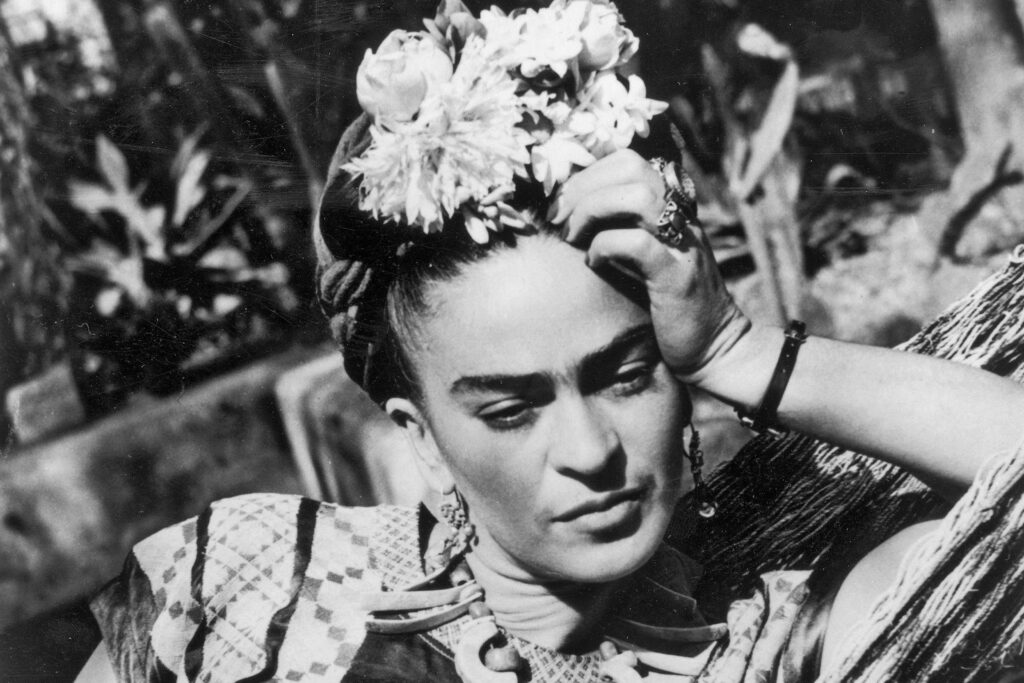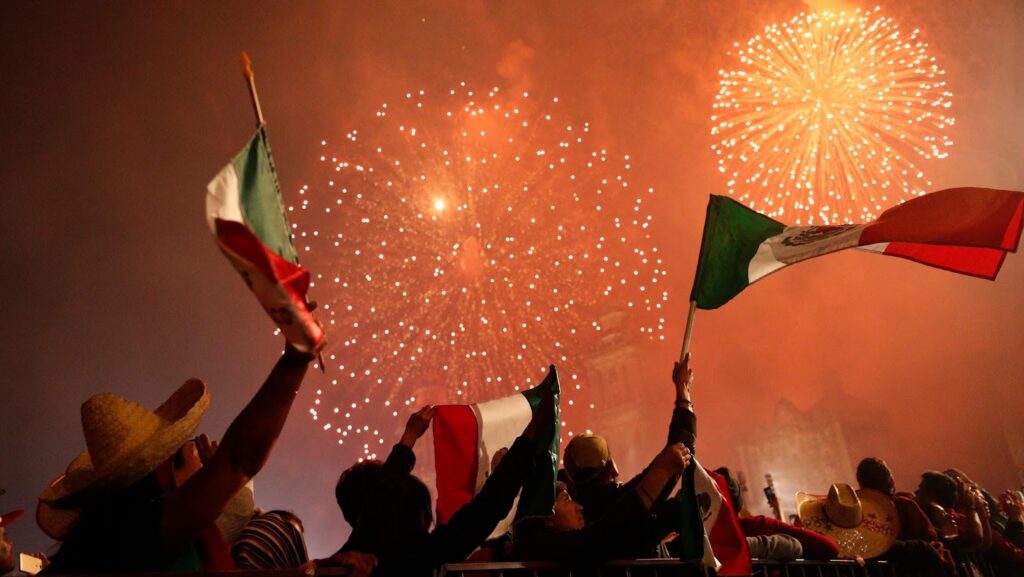Looking for ways to celebrate your heritage this September? Grab your favorite chamoy candy and join the fiesta.

Hispanic diversity is in! Every September, Americans with different latino heritage celebrate National Hispanic Heritage Month. This month-long tradition honors Latinx culture, history, and contributions to the rich tapestry of the United States.
Why do we celebrate hispanic heritage in the US?

From Argentina’s tango to Puerto Rico’s salsa, Latin America is a diverse playground of culture, offering endless opportunities to learn and explore.
The Hispanic population—also known as Latinos, Latinas, or Latinx—makes up the largest ethnic minority in the United States. According to the United States Census Bureau, Hispanics formed 19.1% of the country’s total population as of July 1, 2022. This highly diverse group includes people with roots in Mexico, Puerto Rico, Cuba, Central and South America, the Caribbean, and Spain.
Hispanics and Latinxs have a long history in the United States, dating back to the earliest European explorations. This history is essential to understanding the country’s past.
Hispanic Heritage Month is celebrated in the United States to recognize and honor the culture, history, and achievements of Latinx communities, and their contributions to various aspects of American society, including art, music, literature, science, sports, politics, and more.
When is Hispanic Heritage Month celebrated?

Hispanic Heritage Month takes place annually from September 15th to October 15th.
Each year there is a different theme. The Hispanic Heritage Month 2023 theme is Latinos: Driving Prosperity, Power, and Progress in America.
This month-long national tradition initially began as a weeklong celebration in 1968 under President Lyndon Johnson, called “Hispanic Heritage Week.” In 1988 President Ronald Reagan extended it to a month in order to better capture the depth and diversity of Latin cultures.
This celebration was made possible by dedicated Latinx activists. They knew how significant embracing their heritage and promoting understanding among different communities was for the community.
Additionally, many Latin American countries also celebrate their independence days in September. Costa Rica, El Salvador, Guatemala, Honduras, and Nicaragua on the 15th, Mexico on the 16th, and Chile on the 18th.
Latino(a), Latinx, or Hispanic?

Latin America extends from the northern deserts of Mexico to the Andes in Chile and the southernmost part of Argentina. This entire territory encompasses many diverse countries and cultures with a shared history of colonization by Spain that started in 1492.
While the terms “Hispanic” and “Latino” are sometimes used interchangeably, they each have different meanings. Hispanic refers to people who speak Spanish and/or descended from Spanish-speaking populations. Latino refers to people who are from or descended from people in Latin America.
In the last few years, the word “Latinx” has gained momentum since it first arose as a gender-neutral alternative to Latino and Latina in 2004. Namely Latinx is grounded in the politics of race and ethnicity, which can make it hard to warm up to.
These simplified categorizations can be often complicated, not to mention, unwelcomed by many groups of Latin American origins. This is because one single word cannot group us into one category.
Whichever term you identify with—be it Latino(a), Latinx, or Hispanic—make sure you wear it with pride!
Why is Hispanic Heritage important?

You might be wondering why celebrating diversity and inclusion is so important. Think about how boring it would be if every day was the same. There would be no new foods to try, no exciting music, and no unique stories to tell.
Sounds boring, doesn’t it? Diversity is what makes the world fun, colorful, and full of history.
Latin America is like a treasure chest of diversity. Hispanic Heritage Month isn’t just about one country or one group; it’s about celebrating the rich mosaic of cultures that make up the Hispanic-Latino/Latina-Latinx diaspora.
Not Hispanic, Latin, or Latinx? You’re still invited to the fiesta!

The best thing about Hispanic Heritage Month is that it fosters cultural appreciation and understanding.
Check out local Hispanic Heritage month events happening in your city. These cultural celebrations usually feature lots of music, dance, art, and food that are typical of Latin American culture.
Explore our rich cultural heritage at museums, galleries, and libraries. They are filled with captivating stories, art, and thought-provoking literature you’ve probably never heard of before.
You can also celebrate by trying traditional food. The mouthwatering options include chamoy candy, tacos, empanadas, ceviche, and flan, just to name a few!
This is also the perfect time to acknowledge the challenges that Hispanic communities continue to face, including issues like discrimination and inequality. By understanding these challenges, the entire nation can work together to make the country a fairer place for everyone.
3 Hispanic Heritage Month Activities For The Chamoy Obsessed

Now that you’ve learned all about this month-long celebration, read on to discover 3 fun Hispanic Heritage Month activities for chamoy lovers, Sophia’s Spicy Treats style!
1. Munch on pepinos y cacahuates con chamoy while reading books by Hispanic authors.

If you’re an avid reader, you know that it’s often a bad idea to eat near a book. Weird sticky fingers, sloshing liquids, crumbs falling in the margin, or smudgy fingerprints can ruin the most beautiful of books.
But, if you run at the sight of a 100-page book, then you probably rely on a hearty snack every now and then to keep those brain juices flowing. We won’t stop you!
Did you know that nutritionists discovered that eating protein helps manage the body’s concentration, therefore making reading a lot more digestible? This is because the neurotransmitters in our brains are made up of protein.

Cacahuates, or Spanish for peanuts, are protein-rich, full of healthful fats. Pepinos, Spanish for cucumbers, are rich in fisetin, which research has shown to protect nerve cells and improve memory. Chamoy is simply delicious—period!
Chop some cucumbers and toss in some Mexican Japanese-style peanuts. Smother the mix in Spicy Chamoy Sauce and embark on the surreal journey that is Gabriel García Marquez’ “One Hundred Years of Solitude.”
2. Take a virtual tour of Frida Kahlo’s home and enjoy fruta con chamoy in her honor.

Frida Kahlo was a brilliant Mexican artist known for her unique self-portraits that captured her dreams, pain, and identity.
As you devour her art, you can instantly tell Kahlo had a deep passion for food. She used fruits from her garden and local market as the subjects of her lush, still life paintings arranging them on the table by her bedside.
Today, Kahlo’s artwork continues to inspire people around the world, both physically and digitally.

La Casa Azul, or the Blue House, is a historic house museum located in the neighborhood of Coyoacán in Mexico City. Khalo spent most of her life here, first with her family and later with her husband, fellow artist Diego Rivera.

In honor of Khalo’s ‘Viva La Vida! Watermelons’ painting, why not fix yourself a wedge of watermelon with Watermelon Chamoy Sauce and tour La Casa Azul from the comfort of your home?
3. Delight your guests with a carne asada to celebrate Mexico’s Independence Day.

Between September 15th and 16th, Mexicans around the globe come together to celebrate the anniversary of our country’s independence from Spain. This day is marked with a huge gathering of friends and family typically known as a carne asada, or Spanish for barbeque.
In the US, special events commemorate this celebration across all 50 states, like parades and other festivities filled with traditional food, drinks, music and games. Even the Empire State Building in New York gets dressed in red, white and green light for the occasion.

At home, you can easily get the family and your closest friends together to celebrate Mexico’s Independence Day with a chamoy-filled menu.

Prep a chamoy marinade for the kilos of meat you’ll be serving. Don’t forget dipping the rim of an ice-cold glass in your favorite Chamoy Rim Dip Paste before pouring in a well-deserved dark root beer.
Leave some room for spicy finger foods like chips and salsa, Chamoy Manguitos and more of your favorite chamoy candy!
Now we’re curious, what does hispanic heritage mean to you? Leave your answer in the comments below and join us in celebration of National Hispanic Heritage Month 2023.
